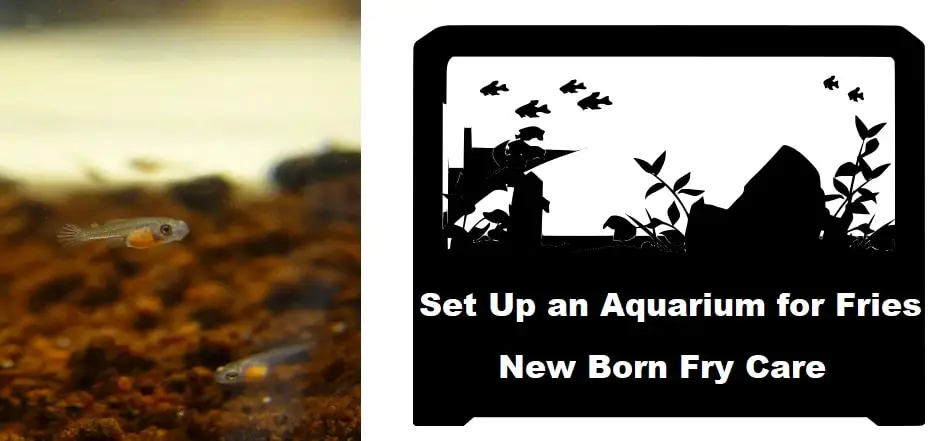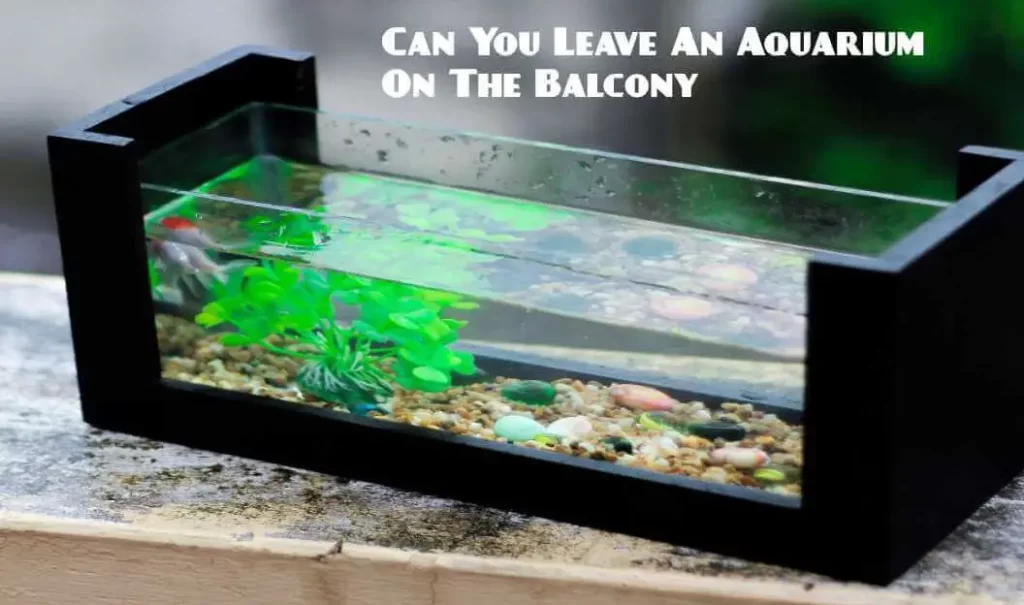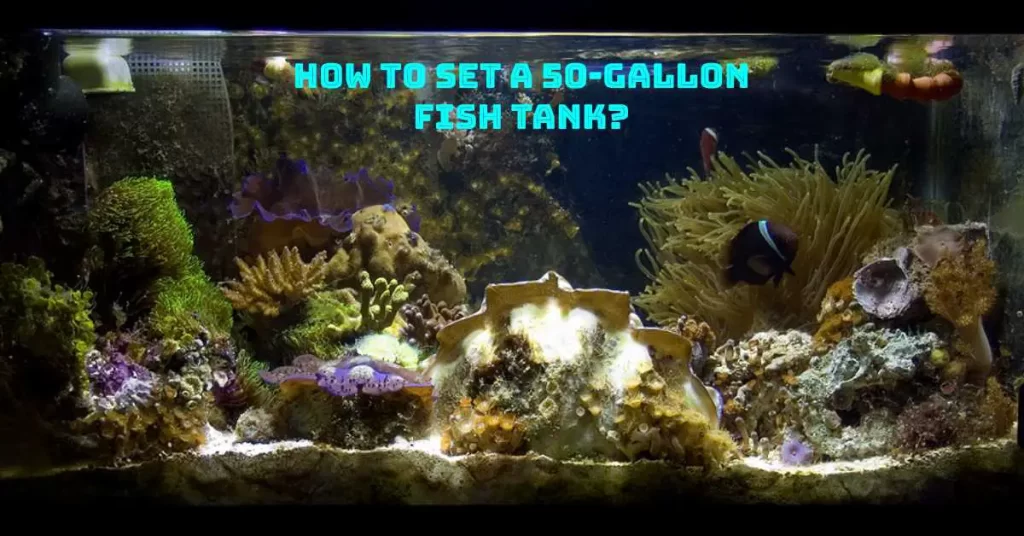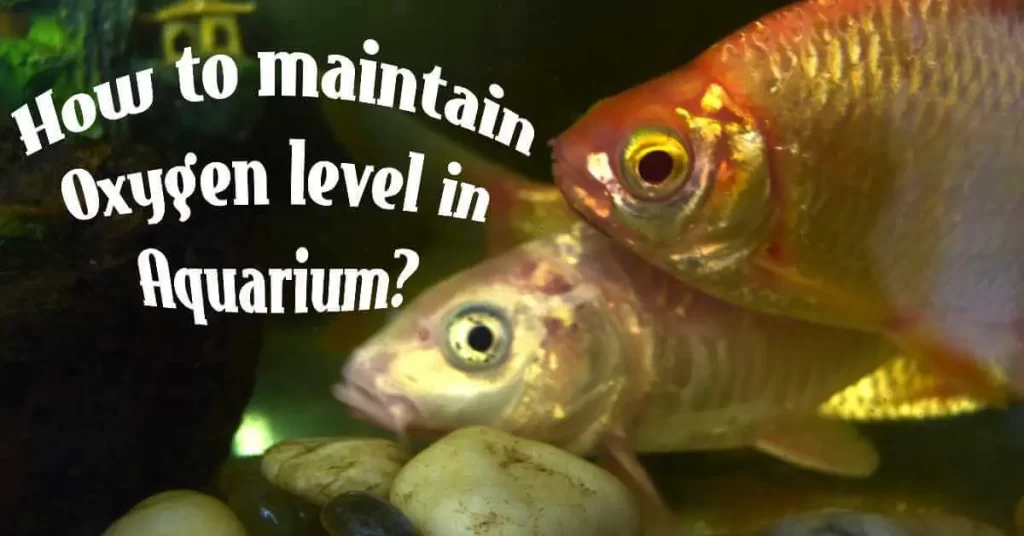After the hard part of breeding, setting up an aquarium and caring for your baby fish seems to be quite easy, but it’s not. If you are done with breeding then the next part you need to know about is how to set up a fry tank properly and care for the baby fish. Without a proper aquarium, there is no possibility of raising the baby fish undoubtedly. Just like other living beings need homes, fish need aquariums for survival.
Setting up an aquarium and caring for your newly born fish in every possible manner requires proper understanding and enough knowledge. So, through this article, I’m going to share with you some important guidelines and tips that will help you to set up a proper aquarium.
It’s not just about getting an aquarium for your fish fry, it is also about setting it up correctly along with the proper equipment. Setting up seems to be a bit intimidating at first, but once you get started, it’s not that much hard. But you obviously have to follow the daily routine for it.
Set Up a Fry Tank
Fry tanks are different as compared to your display tank. These tank does not require as many decorations as you add on your display tank. A fry tank is a tank where you will be adding your fish fry until it gets big enough for the community tank or trade purpose.
The first thing you need to decide is the size of the aquarium you need for the fry. For starters, a 20 to 30 gallon is enough. However, if you are going for a large scale breeding you will need a big tank or several tanks. Once you make a decision, you can get the proper tank and equipment for the related species of fish. I, personally, recommend you purchase equipment only after you had set up the tank. Creating a favorable environment with quality water conditions will take a bit more time than you actually think.
Are you ready to go through eleven important information steps by steps? Ok, let’s have a closer look;
Step 1: Choose a Location
Choose the permanent spot for your tank in your home before starting setting up the tank. Once it’s set up, the aquarium will be too heavy so choosing the permanent spot will be more preferable. Setting up the tank out of direct sunlight will be the best thing you can do.
Step 2: Cleaning the Tank
Always use the warm water to rinse the tank and a paper towel to wipe out. And you should never use detergents, soap or any other chemical made products to clean the aquarium tank. Detergents and soap contain different chemicals that will be harmful to baby fish’s health.
Step 3: Adding Substrate
Adding the substrate like gravel, aquarium rocks, sand adds the extra beauty and hiding spot in the aquarium. Before adding the substrate, you surely have to rinse it with warm water and colander. You have to be careful while moving the substrate around as it can scratch your aquarium tank too.
Step 4: Half-Filling Up the Tank
The main source of water in any home is the tap water. As tap water contains chlorine and chlorine chemicals, which is way too harmful to the baby fish, you need to treat the water with de-chlorinator before adding it to the tank. If you don’t want your baby fish to suffer or die, you surely have to add the treated water instead of tap water.
In this step, what I normally would do is add haft the water from the breeding tank or the main tank. This way, I don’t have to wait a long period of time for the nitrogen cycle to complete in the fry tank.
In this step, I only fill up half of the aquarium with water. this way it will be easier to add aquarium accessories to the tank.
Step 5: Adding Aquarium Equipment
Now, the turn comes for choosing the required equipment for the aquarium. A good sponge filter, an air pump, and a heater are all you need for the fry tank. You don’t need any fancy equipment for the fry tank, keep it as simple as possible.
Step 6: Adding Decorations
You can add any artificial or live plants as well as other decorations like you want to. Decorations can be arranged to hide plumbing lines and the filtration system. While adding the live plants, make sure that water is warm before planting them in the gravel as it prevents shocking the roots and killing the plant.
Step 7: Filling Up the Tank
Finish the water filling in the tank with treated water. Leave some space between the lid and the water surface especially if you have fish that are prone to jumping.
Step 8: Nitrogen Cycle
After all the completion of the above steps, now you can add the biological filter where nitrifier bacteria will colonize. The bacteria in the Biological MEdia removes the dangerous nitrite and ammonia from the tank.
For this, you have to use aquarium specific, ammonia-based concoction. The length of cycling depends upon many factors. So, continue to go through the water tests once a week throughout the process to determine the biofilter has successfully stabilized. This process will take approximately 8 weeks.
Step 9: Adding Heater The Correct Way
Place your submersible heater in a strong water flow area. Then, you should place an in-tank thermometer on the opposite side of the aquarium tank as far away from the heater. It helps to ensure the correct required temperature for your whole aquarium tank.
Step 10: Running Aquarium Equipment
Now run all the equipment in your tank. Turn on the air pump, heater, and filter and let the tank cycle for about a web before testing the water parameter for Ammonia, nitrite, and nitrate. Meanwhile, provides time for good bacteria to colonize in your tank also make any needed adjustment in the aquarium.
Step 11: Add Baby Fish to the Tank
Finally, after following all the above steps, now you can add up your baby fish to the aquarium.
Before adding the fry to the water, first, acclimate the fish. add your fry to a container and float it on the new tank. Wait for 15 minutes so that the water temperature is acclimated. When the temperature seems to be equalized, add water from the tank to the bucket with the help of a cup.
Add a quarter cup of tank water to the bucket every single minute until the transport water has been diluted with tank water by a factor of six at least. It is now safe to scoop each baby fish from the bucket with an aquarium net and add them one by one into the tank. But one important thing is don’t add wastewater in the bucket.
Tips and Guidelines for Cleaning and Maintaining your Fish Tank
Cleaning up your aquarium tank is easier to do than setting it up. You just need to change 25% of the tank water every other week. It’s not quite good to take out the baby fish while in the cleaning process as it can make them sick and get stress. If necessary, move your baby fish gently with some sort of net and place them in a large bucket with the same tank water.
Before you drain tank water, turn off pumps, heaters, and filters and remove all the installed decoration items. Wash decoration items with clean, warm water and keep them aside for a time.
Do not change your biofilter or clean the biofilter clean using tap water. Soak the biofilter in the tank water you just removed and clean it gently.
By following the guideline and tips properly, you are surely going to get a proper aquarium set at your home with no shadow of a doubt.
How to Care for Your Baby Fish After Setting Up the Tank?
Unfortunately, the work is not finished yet for you. After you set up a proper aquarium for the baby fish, now the time comes for caring for the fish. The care for a human baby and for a baby fish is somehow similar in some dimensional point. Setting the home is not enough for your baby fish, proper caring is also required in order to raise them in properly. As proper caring ensures proper rearing, caring is the utmost thing that each and every fish keeper has to do in order to keep fish alive. The three main things which you need to aware of are briefly introduced below.
Proper Feeding
As proper feeding ensures that the fish is receiving proper nutrients to grow into a healthy juvenile. Any fish when they hatch out will have an attached yolk sac, which tends to provide the required nutrition to them until they are capable of feeding on their own. After that, your baby fish must be fed at least 4 to six times a day as they have a high metabolism rate and lack proper digestion capability.
Infusoria, Brine Shrimp, and Green water are the typical baby fish fry foods that are generally being used nowadays. With the growth of online shopping and the existence of the market sector, there is the availability of a wide range of food for your baby fish fry.
After the first few weeks, most baby fish can feed on live foods and on to dry, prepared foods. Once this happens, the tough part is over for you to some extent. But some fish like cichlids as they become larger get aggressive and could eat other fish as a lunch also.
Creating A Good Home
As your baby fish is immature and small in size, there are many factors that can negatively impact on your fish health. Your baby fish could get contact with Bacterial, fungal, parasitic, and viral diseases with poor water quality, poor lighting as they have an immature immune system. Here’s what you need to do:
Check the Water Quality
about 10% of aquarium water should be replaced frequently and the nitrite level should be zero. Changing some portion of your tank water and examining and maintaining the level of ph, ammonia, nitrate, and nitrites is an utmost vital thing in order to give your baby fish a favorable environment.
Check Aeration
Too many decoration things can also impact your baby fish. In the context of a small tank, churning water can be more dangerous to fragile baby fish as well.
Check the Temperature
A range of 75 to 80 degrees Fahrenheit is recommended for the most tropical freshwater fish but fish like goldfish and koi prefer it cooler.
Maintaining the Distance of Your Baby Fish with Adult Ones
It totally depends upon the species of fish, whether they feed or not on the young ones. Fish like guppies feed their own young ones whereas fish like fire mouth cichlids and convict cichlids don’t feed. So, you have to keep your baby fish away from fish like guppies in order to save their life and ensure proper rearing. Just to avoid the risk factor, you can simply avoid adding any adult fish in the baby fish tank.
How Quickly do Baby Fish Grow If They Get Proper Care?
If you take proper care of your baby fish, it tends to grow faster for sure. If you feed 3-4 meals a day, they will grow faster. Egg-laying fish like angelfish fry take a year to mature sexually and continue to grow until they are healthy enough. Whereas, live-bearing species of fish like Guppy fry take six months approximately.
Why is Your Baby Fish Dying?
Most probably, the reason behind the death of your baby fish is insufficient caring from you. Though studies show that most of the baby fish tend to die because they are unable to feed on the environment due to limitedness by the physics of water. Unlike mammals, most species of fish release eggs and sperm externally inside the water tank but even after the best condition, at least 50% of newly born babies still die.
Conclusion
There is no possibility of proper rearing either to human babies or baby fish without proper care and environment. Well, both an aquarium set up and aftercare are very important things in order to rear your fish fry.
There is a saying that “Tough roads always lead you to a beautiful destination.” So, likewise the hardship you have to go through to rear baby fish is quite worthwhile. Now, you know the proper knowledge about how to set up a fry tank and care for newly born fish, you are all set to start the beautiful journey of rearing the fish.
Reference
Image credits:
- https://en.wikipedia.org/wiki/en:Creative_Commons
- https://creativecommons.org/publicdomain/zero/1.0/deed.en






